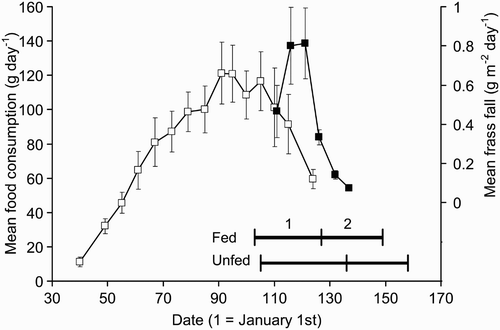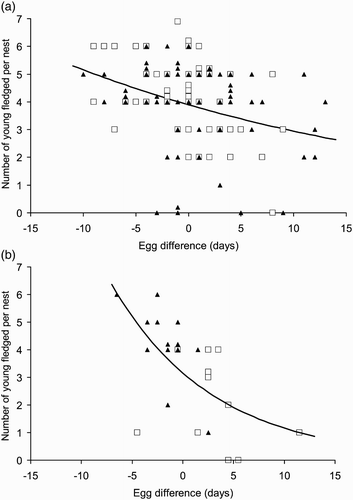Figures & data
Figure 1. The mean rate of fat consumption (left axis and open symbols) and frass fall (right axis and closed symbols) versus date. The periods of egg laying and incubation (1) and chick rearing (2) are indicated at the base of the graph for the fed (upper line) and unfed zones (lower line).

Table 1. The first egg dates for nests in the fed and unfed zones of Wormley Wood from 2006 to 2011. Supplementary food was provided in the fed zone only in 2011. In a model of all years' data there was a significant difference between the fed and unfed zones in 2011 only (in bold).
Table 2. The clutch size and numbers of young fledged for nests in the fed and unfed zones. Supplementary food was provided in the fed zone in 2011. 2006–2010 were the control years when no supplementary food was provided in either zone. In models including all years' data there was no significant difference in clutch size between the fed and unfed zones in any year including 2011, but there was a significant difference in the number of fledged young between the fed and unfed zones in 2011 only (in bold).
Figure 2. The numbers of young fledged per nest versus egg difference (first egg date for the nest – median laying date for the year). Closed triangles for nests in the fed zone, open squares for nests in the unfed zone. Points are ‘stacked’ where the values overlap. (a) Nests in 2006–2010 when no supplementary food was provided. (b) Nests in 2011 when supplementary food was provided in the fed zone.
